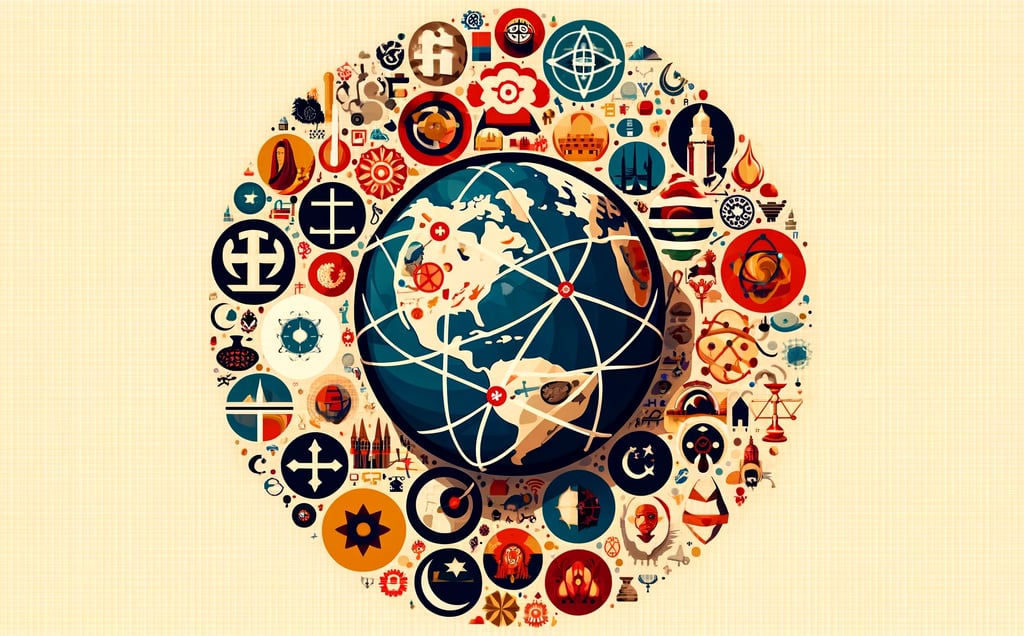"The Clash of Civilizations" by Samuel Huntington
Unlock the impact of cultural dynamics on global business with insights from "The Clash of Civilizations" by Samuel Huntington. Essential reading for procurement, supply chain, and marketing pros.
BOOKS
The Procure 4 Marketing Team
6/6/20244 min read


Samuel P. Huntington's "The Clash of Civilizations and the Remaking of World Order" is a seminal work that offers a profound analysis of global political and cultural dynamics. Published in 1996, Huntington's book has become a cornerstone in understanding post-Cold War geopolitics. Although primarily a work of political science, its insights into cultural and civilizational divides have significant implications for procurement, supply chain, and marketing professionals who operate in an increasingly interconnected and culturally diverse global marketplace. This review explores the key themes, critical analysis, and practical applications of Huntington’s work for these fields.
Overview
Huntington’s thesis posits that future conflicts will be driven not by ideological or economic differences but by cultural and civilizational identities. He argues that the world is divided into several major civilizations, each with its own distinct values, social structures, and historical legacies. As globalization increases interactions among these civilizations, the potential for conflict and misunderstanding grows. Understanding these cultural fault lines is crucial for professionals who must navigate complex international landscapes.
Key Themes
Civilizational Identity: Huntington categorizes the world into major civilizations, such as Western, Islamic, Sinic (Chinese), Hindu, and others. He emphasizes that cultural and religious identities will be the primary sources of conflict. For procurement, supply chain, and marketing professionals, recognizing and respecting these identities is essential for successful international operations.
Cultural Fault Lines: The book identifies "fault lines" between civilizations where conflicts are most likely to occur. These include areas where different civilizations meet, such as the boundaries between the Western and Islamic worlds. Understanding these fault lines can help professionals anticipate and mitigate risks in cross-cultural engagements.
Globalization and Interdependence: While globalization increases economic interdependence, it also heightens awareness of cultural differences. Huntington argues that this can lead to both cooperation and conflict. Professionals must balance the benefits of global networks with the challenges of cultural diversity.
Western Dominance and Resentment: Huntington discusses the perception of Western cultural dominance and the resulting resentment from other civilizations. This theme is particularly relevant for marketing professionals who need to tailor their strategies to avoid cultural insensitivity and foster inclusivity.
Multiculturalism and Integration: The book explores the internal challenges of multicultural societies and the integration of different cultural groups. For supply chain managers and marketers, this underscores the importance of creating inclusive environments that respect and integrate diverse perspectives.
Critical Analysis
While Huntington's work is influential, it is not without its criticisms and limitations.
Deterministic View: Critics argue that Huntington’s view is overly deterministic, suggesting an inevitable clash between civilizations. This perspective can be limiting, as it may overlook the potential for intercultural dialogue and cooperation. Professionals should seek to build bridges rather than assume conflicts are unavoidable.
Overgeneralization: The broad categorizations of civilizations may oversimplify the diversity within them. For instance, lumping diverse cultures into a single “Islamic” or “Western” category can overlook significant internal differences. Professionals must recognize the nuances within these broad groups.
Neglect of Economic Factors: Huntington's focus on cultural and civilizational factors may underemphasize the role of economic interests and power dynamics. In practice, professionals must consider both cultural and economic factors in their strategic decisions.
Implications for Procurement, Supply Chain, and Marketing Professionals
Procurement: Understanding the cultural context of suppliers is crucial for procurement professionals. Recognizing the values and norms of different civilizations can enhance negotiations and foster stronger relationships. For example, knowing the importance of trust and long-term relationships in some cultures can guide how procurement contracts are structured and managed.
Supply Chain: Supply chain managers must navigate the complexities of global logistics across cultural boundaries. Awareness of civilizational differences can improve communication and coordination with international partners. Understanding regional conflicts and fault lines can also help in risk assessment and contingency planning.
Marketing: Marketing professionals must tailor their strategies to resonate with diverse cultural audiences. Huntington’s insights can help avoid cultural faux pas and create more effective, culturally sensitive campaigns. Understanding the historical and cultural context of target markets can lead to more authentic and engaging brand messaging.
Practical Applications
Cultural Training and Sensitivity: Investing in cultural training for teams can enhance their ability to operate effectively in diverse environments. This includes understanding local customs, communication styles, and business etiquettes.
Local Partnerships: Building strong local partnerships can help navigate cultural complexities. Local partners can provide valuable insights and facilitate smoother operations in foreign markets.
Inclusive Marketing Strategies: Developing marketing campaigns that are inclusive and respectful of different cultures can enhance brand reputation and customer loyalty. This involves conducting thorough cultural research and engaging with local communities to ensure authenticity.
Risk Management: Incorporating cultural and civilizational analysis into risk management strategies can help anticipate and mitigate potential conflicts. This includes monitoring geopolitical developments and understanding their implications for supply chain stability.
Conclusion
"The Clash of Civilizations and the Remaking of World Order" by Samuel P. Huntington provides a framework for understanding the cultural and civilizational dynamics that shape our world. For procurement, supply chain, and marketing professionals, the book’s insights are invaluable for navigating the complexities of the global marketplace.
While the book’s deterministic and broad categorizations require a nuanced application, its core message about the importance of cultural awareness and sensitivity remains highly relevant. By integrating Huntington’s principles with a focus on intercultural dialogue and cooperation, professionals can enhance their strategic decision-making and foster more harmonious international relationships.
In conclusion, "The Clash of Civilizations" is a must-read for professionals seeking to deepen their understanding of global cultural dynamics and their impact on business operations. By applying the lessons from Huntington’s work, procurement, supply chain, and marketing professionals can build more resilient, inclusive, and successful global strategies.

